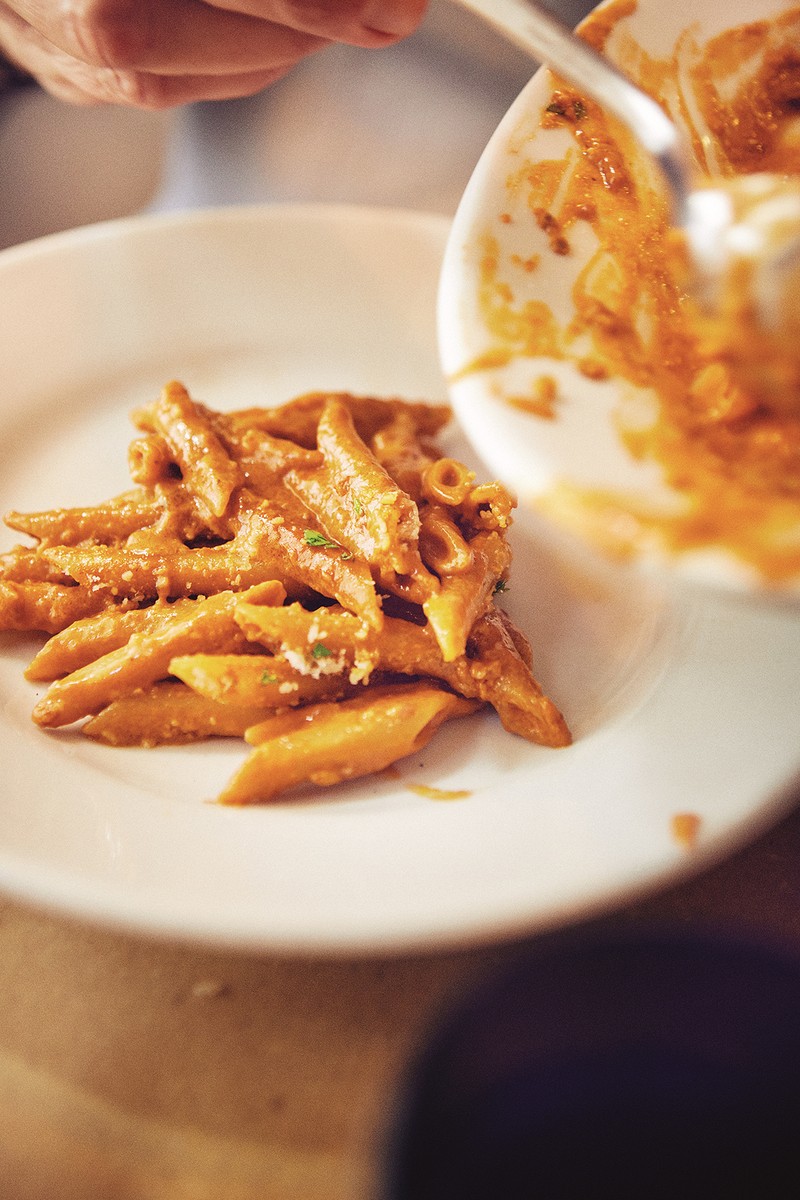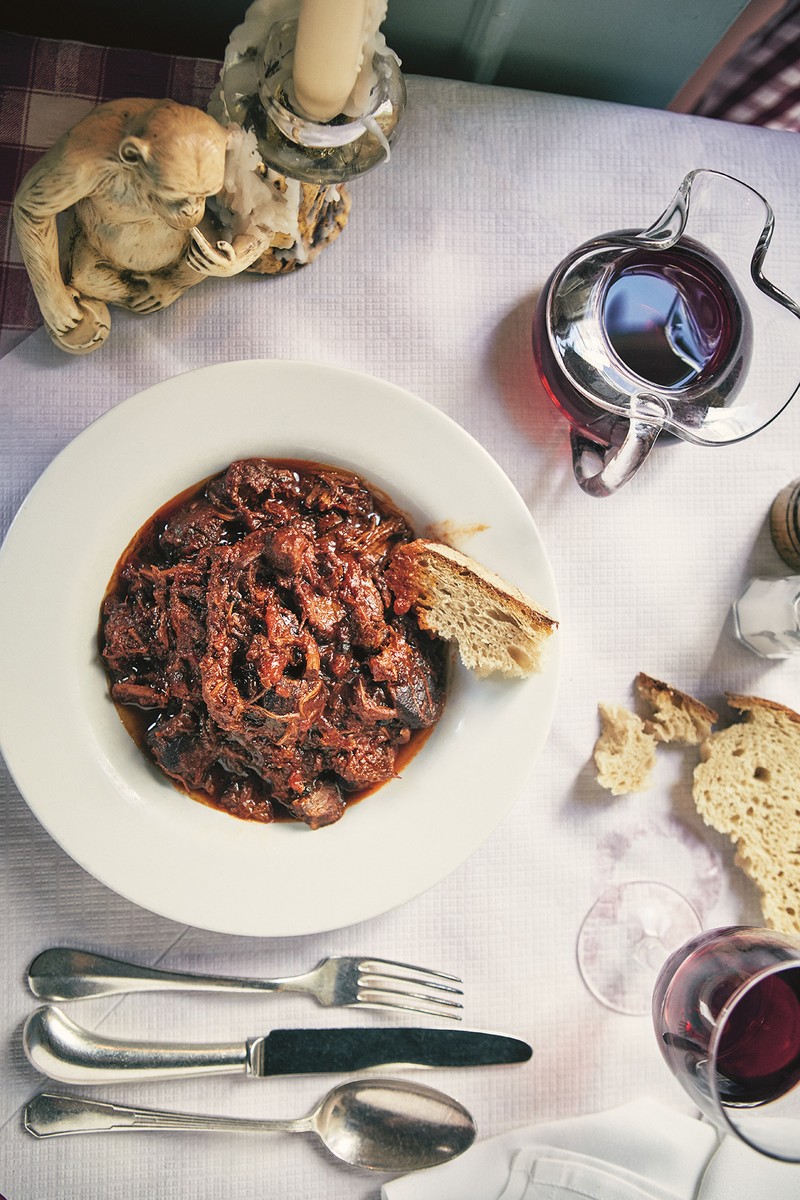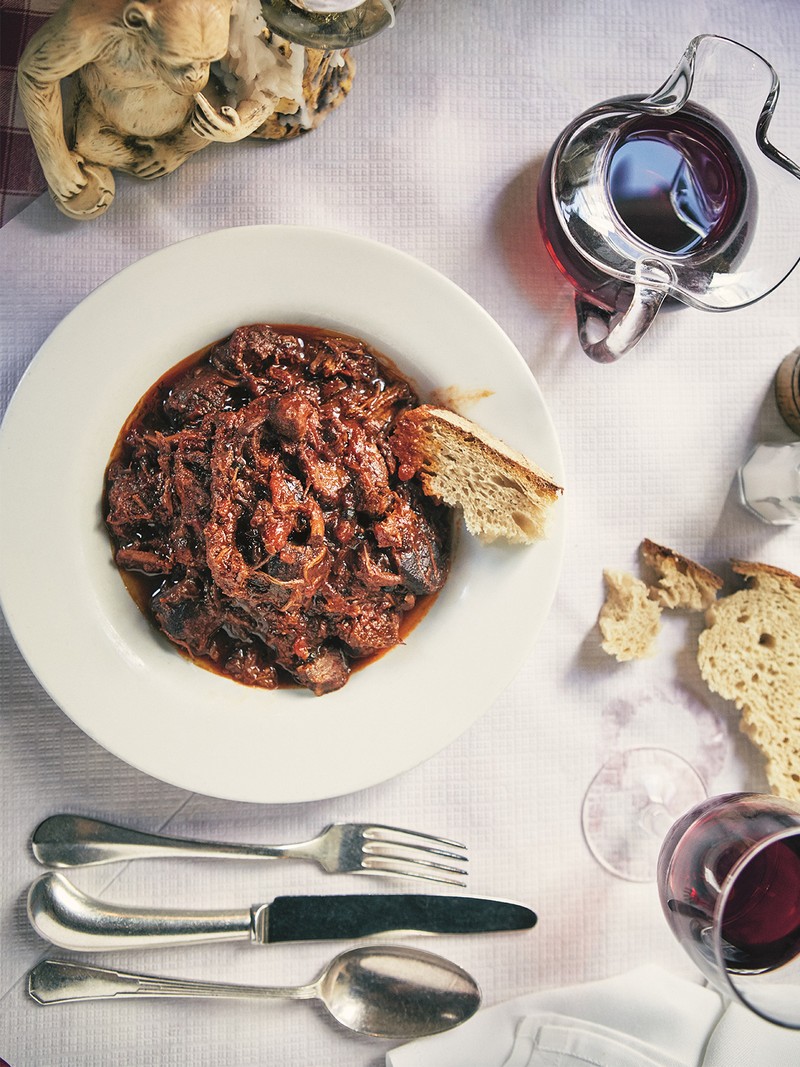The Brutto Founder Shares 3 Italian Recipes

When I decided to call my restaurant Brutto it raised some eyebrows. Brutto is the Italian word for ‘ugly’, after all, and who in their right mind would want to call a restaurant ugly? I had my reasons. Firstly, I liked the shape of the word, brutto. It has a strong appearance on the page and I knew it would look good on a shopfront and, crucially, when written in red capital letters on the lantern I had always envisaged hanging above the door. Secondly, it was easy for English speakers to pronounce. When spoken, those two syllables are like little punches, and the vowel sounds ‘ooh’ and ‘oh’ are, to the ear, like an expression of delight. Thirdly, I wholeheartedly endorsed its secondary meanings. Brutal. Inelegant. Basic. Unrefined. These all appealed to my notions of unfussiness and honesty when it comes to food. And, finally, because I loved the Italian expression brutto ma buono – ‘ugly but good’. It’s a phrase that is often used to describe the sort of cooking you might find in a family home, prepared lovingly by a grandmother, rough around the edges, unreconstructed on the plate, scant attention to fancy presentation and prettiness, but, my god, does it taste good …
A well-stocked pantry is the key to running a successful domestic kitchen. As well as all the different types of rice and all the pasta shapes, there should be multiple bags of flour of all the varieties, sugars, dried fruit, dried pulses, nuts, grains, oils, tinned anchovies, at least six different vinegars… Also, it’s a great idea to freeze any unused stock if you want to potentially save time in the future. Having said that, I rather enjoy the process of making stock and anything that keeps me in the kitchen longer is fine by me.
Quite soon after Brutto opened, we received a few requests from our customers for dishes that weren’t as meat-heavy as the majority of traditional Florentine fare. It was a fair point. So [in this book] I’ve included many recipes that are a bit kinder to non-meat eaters while still giving an honest account of the region’s flavours and traditions.
Inspired? Here are three recipes to try at home…

Pasta Alla Vodka
I first had this dish at the cult restaurant Alla Vecchia Bettola on a busy corner by a main road on the outskirts of Oltrarno in Florence. It’s one of those slightly kitsch recipes that was popular in the 1980s and which has been enjoying something of a revival in Italy and even now in New York. Despite the potentially gimmicky nature of the addition of vodka, it works exceptionally well and is a favourite at Brutto. Most supermarket penne is rigate – with ridges. If you can find penne lisce – smaller and without ridges – this makes a much more authentic version of this dish.
Drain the tomatoes, reserving the juice for another purpose.
Place a large ovenproof saucepan over a low to medium heat and gently sauté the onion in a couple of tablespoons of olive oil with a pinch of salt for 12-15 minutes until glossy and translucent, being careful not to let the onion brown. Add the garlic, chilli flakes and oregano and combine, stirring for a few more minutes. Pour in the vodka, increase the heat a little to bring to a very gentle bubble, and cook until the liquid has reduced by a third.
Preheat the oven to 140°C.
Now add the drained tomatoes to the saucepan with a good pinch of salt and continue to gently boil for just 1 or 2 minutes, until the oven is ready. Transfer the saucepan to the oven, uncovered, and bake for 30-40 minutes, until the sauce has reduced and has coloured a little on top.
Meanwhile, cook the penne in plenty of salted boiling water. Drain the pasta. Remove the tomatoes from the oven, and add the double cream, sugar and half the parmesan. Using a stick blender, create a smooth sauce. Immediately add the cooked penne and stir until fully combined. Adjust the seasoning if necessary and serve in four warmed bowls, with the remaining parmesan on the table.

Pasta E Fagioli
When I think of comfort food, my mind turns to pasta e fagioli. It’s a very good example of a dish that may not look pretty, but delivers a lot of flavour and satisfying umami. The ingredients are inexpensive and it’s a very reliable pantry staple – you should have pretty much everything you need in your larder and fridge without needing to go shopping. You can use any small pasta shape but ditalini or macaroni work best. The quantities in this recipe will serve more than four people but I like the option of going back for seconds.
Place a large saucepan on a medium heat and add a good glug or two of olive oil. Gently sauté the pancetta for a couple of minutes until the meat is starting to colour. Add the chopped garlic and stir for a further minute. Now add the onion, carrot and celery and a splash more olive oil. Coat all the ingredients well and sweat for 12 minutes or so, until glossy and translucent.
Drain and rinse the borlotti beans. Add them to the pan with the rosemary, stir for a few minutes, then add two-thirds of the chicken stock. Bring to a gentle boil, then reduce to a low simmer, cover with the lid and leave for 2 hours.
Remove about half the beans with a slotted spoon and place them in a blender. When the mixture has a thick, smooth consistency, return it to the pan and add the pasta and the rest of the stock if necessary, with a good pinch of salt and a twist of black pepper. Cook for a further 5-6 minutes, taste and add more salt if needed, and serve in four warmed bowls. Zig-zag the top of each serving with a thin stream of olive oil, using a pourer or your thumb to stop the olive oil drizzling too quickly. Serve with plenty of parmesan on the table and some crusty bread.

Peposo
This is the classic Florentine beef stew. It’s a dish of extremely deep flavours and comforting textures, and it’s not a preparation that can be rushed. You need at least four hours, preferably more, and as with many Tuscan recipes, it is improved by leaving overnight. I’d love to be able to say you can use an alternative cut if you can’t get hold of beef shin, but it really must be shin. And you must leave the fat on – do not be tempted to trim. Your butcher will always be able to provide shin even if your supermarket can’t. Additionally, the wine element needs to be on brand and regional. Chianti or even a standard sangiovese will provide much better results than a cheap new-world merlot.
Melt half the lard in a very large frying pan and sear the meat on all sides until nicely browned. Add a few pinches of salt during this process. You may need to fry in batches to avoid overcrowding the pan. If there is a dark residue at the bottom of the frying pan, deglaze with a splash of red wine. When the all the shin is brown, transfer to a very large saucepan in which you have melted the remaining lard. Add the sliced garlic and the peppercorns and stir for 1 minute. Now add the chopped tomatoes and the rest of the wine. Bring to the boil briefly, then reduce to a very low simmer.
For the next 4 hours, keep half an eye on your peposo to make sure it’s not drying out too quickly. If it is, cover it, but the full bottle of wine should have been sufficient to keep it stew-like. After 4 hours, check the seasoning and adjust if necessary. The beef shin will have disintegrated somewhat and become stringy and soft. You can encourage this further with some hearty wooden spoon action. If it hasn’t, leave it longer. Or you could let it cool and leave it covered overnight. Then give it another 30 minutes on a medium heat the next day.
Brutto by Russell Norman (published by Ebury Press, £32) is available to buy now. Visit Amazon.co.uk
All products on this page have been selected by our editorial team, however we may make commission on some products.
DISCLAIMER: We endeavour to always credit the correct original source of every image we use. If you think a credit may be incorrect, please contact us at [email protected].



